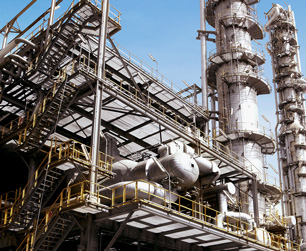Tetrachloroethene / Perchloroethylene (PCE)
| EPA Maximum Contaminant Level (MCL) |
0.005 mg/L |

Tetrachloroethene—also known as tetrachloroethylene, PCE, perchloroethylene or perc—is a common chemical solvent used in dry cleaning, the cleaning of metal machinery, and in the manufacture of some consumer products and chemicals.
PCE arrives in drinking water through discharge from factories and dry cleaning facilities.
Health Effects of Tetrachloroethylene
Tetrachloroethylene has toxic effects on the central nervous system. According to the WHO, when once used to treat parasitic worms, it was known to cause “inebriation, perceptual distortion, and exhilaration.” Evidence as to its carcinogenicity remains insufficient, although it is classified by the EPA as a “likely human carcinogen” that can lead to liver problems with long term exposure:
Some people who drink water containing tetrachloroethylene well in excess of the maximum contaminant level [0.005 milligrams per Liter] for many years could have problems with their liver and may have an increased risk of getting cancer.
Water Treatment for Tetrachloroethylene
The EPA recommends granular activated carbon (GAC) in combination with packed tower aeration (an air stripping technique) for the treatment of tetrachloroethylene. Lenntech reports that activated carbon on its own has a “high probability” of removing tetrachloroethylene.
Sources: EPA, WHO, Lenntech, Photo: WikiMedia, author: Secl
Site Index
Filtration Systems
- Aeration for Iron & Sulfide
- Backwashing Filters
(whole house & well units)
- Chlorine & Chemical Injectors
- Countertop Water Filters
- Emergency Filters
- Garden Hose Filters
- Reverse Osmosis, Residential
- Reverse Osmosis, Commercial
- Shower Filters
- Specialty Filters
- Ultraviolet Systems
- Undersink Filters
- Water Softeners
- Whole House Filters
Cartridges
Parts
- Replacement Parts
- Faucets
- Filter Media
- Fittings
- Housings
- O-rings
- Pumps
- Pura UV
- R.O. Parts
- R.O. Tanks
- R.O. Booster Pump
- VIQUA UV